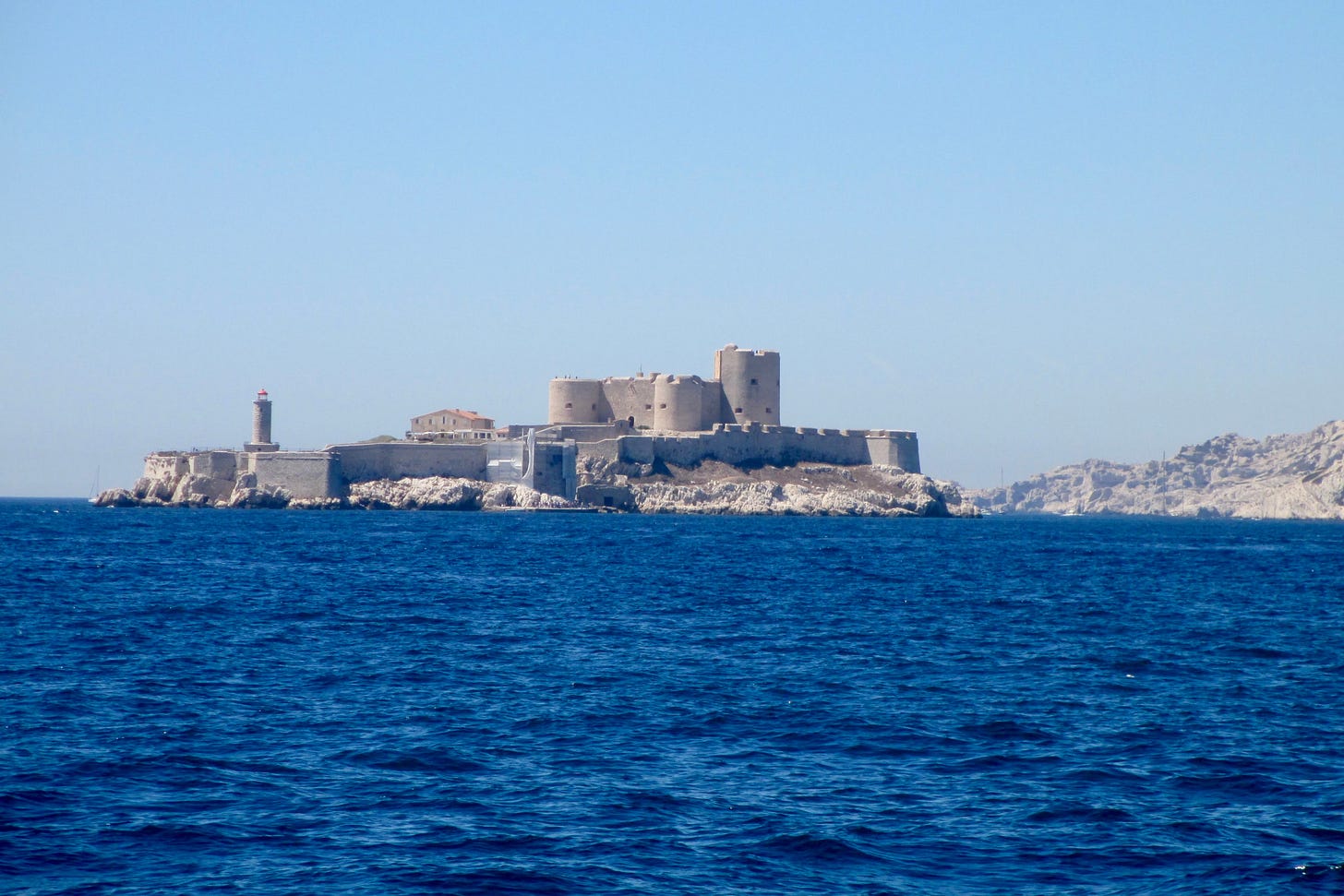“On February 24, 1815, the lookout at Notre-Dame de la Garde signalled the arrival of the three-master Pharaon, coming from Smyrna, Trieste and Naples. As usual, a coastal pilot immediately left the port, sailed hard by the Château d’If, and boarded the ship between the Cap de Morgiou and the island of Riou.”1 So begins Alexandre Dumas’ epic novel The Count of Monte Cristo, one of the most influential adventure stories of all time—a saga that launches from the cosmopolitan, enigmatic city of Marseille.
Marseille is the second city of France, but for most of its history it was not even part of the French nation. Founded by Greeks as Massallia in antiquity, but occupied by humans for far longer, during the Middle Ages Marseille was part of the independent kingdom of Provence.
As William Firebrace so eloquently describes in Marseille Mix, his incisive study of the city:
Marseille is a series of invented cities, living as stories and images, sometimes original, sometimes borrowed, strung together without too much concern for the joints and overlaps. There are any number of semi-fictional versions of Marseille, competing with one another and often contradictory—the comic seaside village whose inhabitants doze out in the sun; the haven of gangsters and whores with its carefully staged shoot-outs; the magnificent port, former gateway to the east, now mostly derelict; the multicultural city of immigrants and outcasts, colourful or threatening or both together; the new city of leisure, capital of the would-be land of Provence-California; the city of grainy music videos, with youths shooting up outside mournful housing blocks; the dull bourgeois provincial town where nothing ever happens; the mysterious unknowable city of the Mediterranean coast, with its hills and limestone coves. All these cities are found in the many books and films about Marseille, each one based on some actual aspect of the city, but also a projection, an overstatement or deliberate distortion, for somehow Marseille more than most cities lends itself to myths and exaggerations. With every characterisation the feel of Marseille turns and shifts, the city moves from dangerous to harmless, from healthy to sick, from light to dark. Each of these images creates a different city, a city that is never precisely sited, a city that is always elsewhere.2
A city that is many things, a city that is always elsewhere. And Marseille is always elsewhere from the vantage of its nearby islands. As we embark on The Usonian’s three-part visit to Marseille, we’ll begin with Marseille’s version of Alcatraz—the prison island of If.



